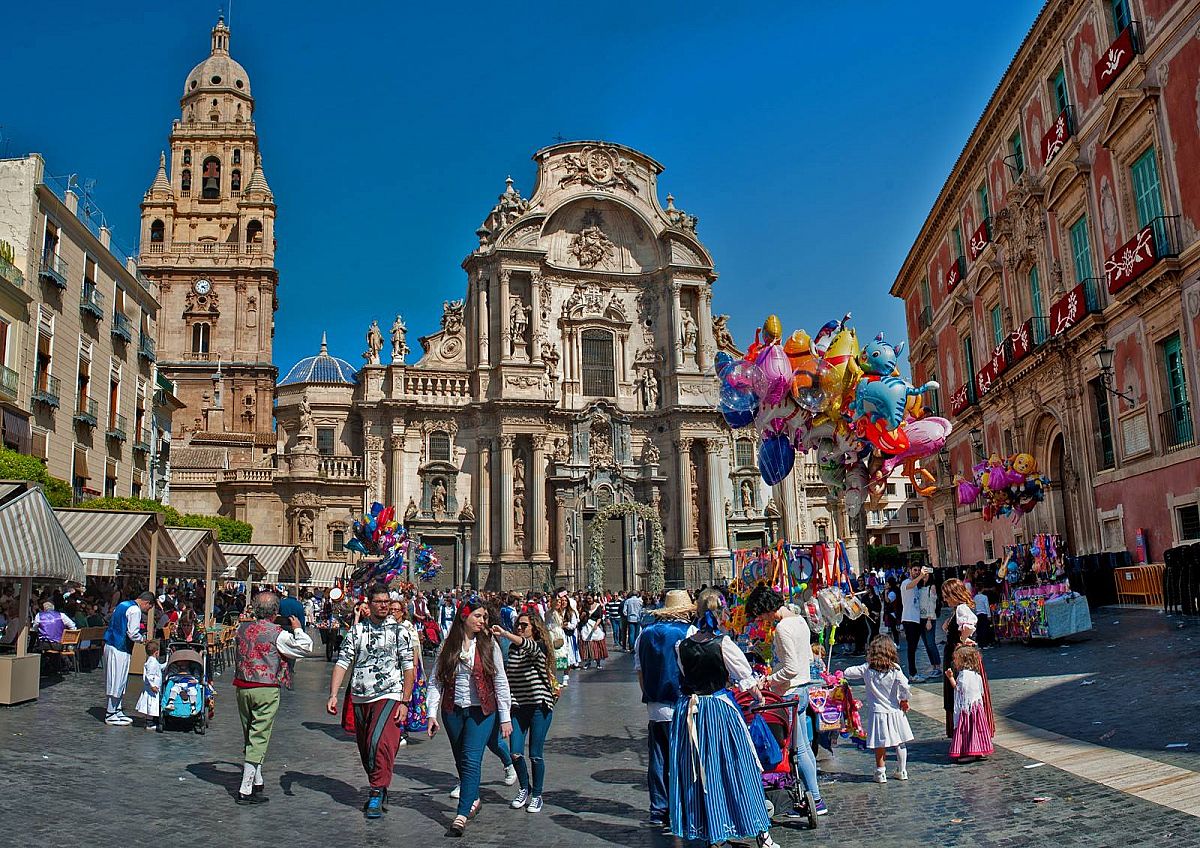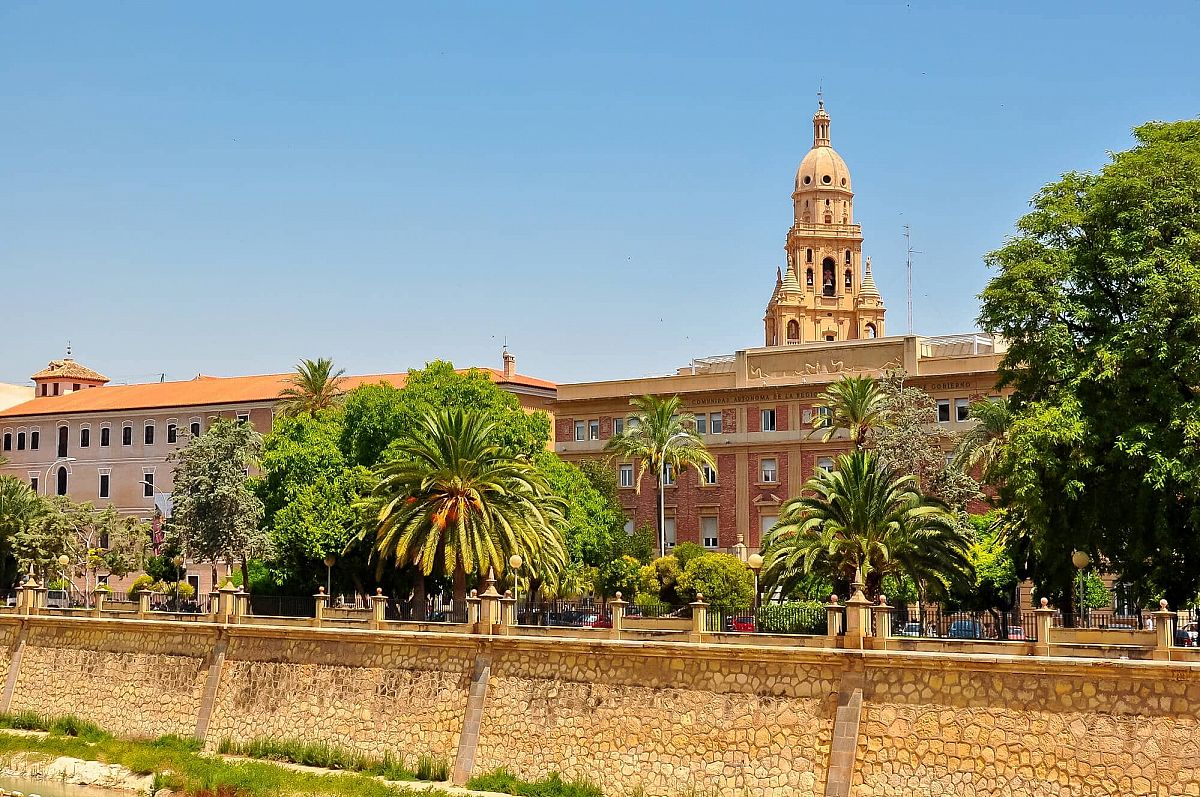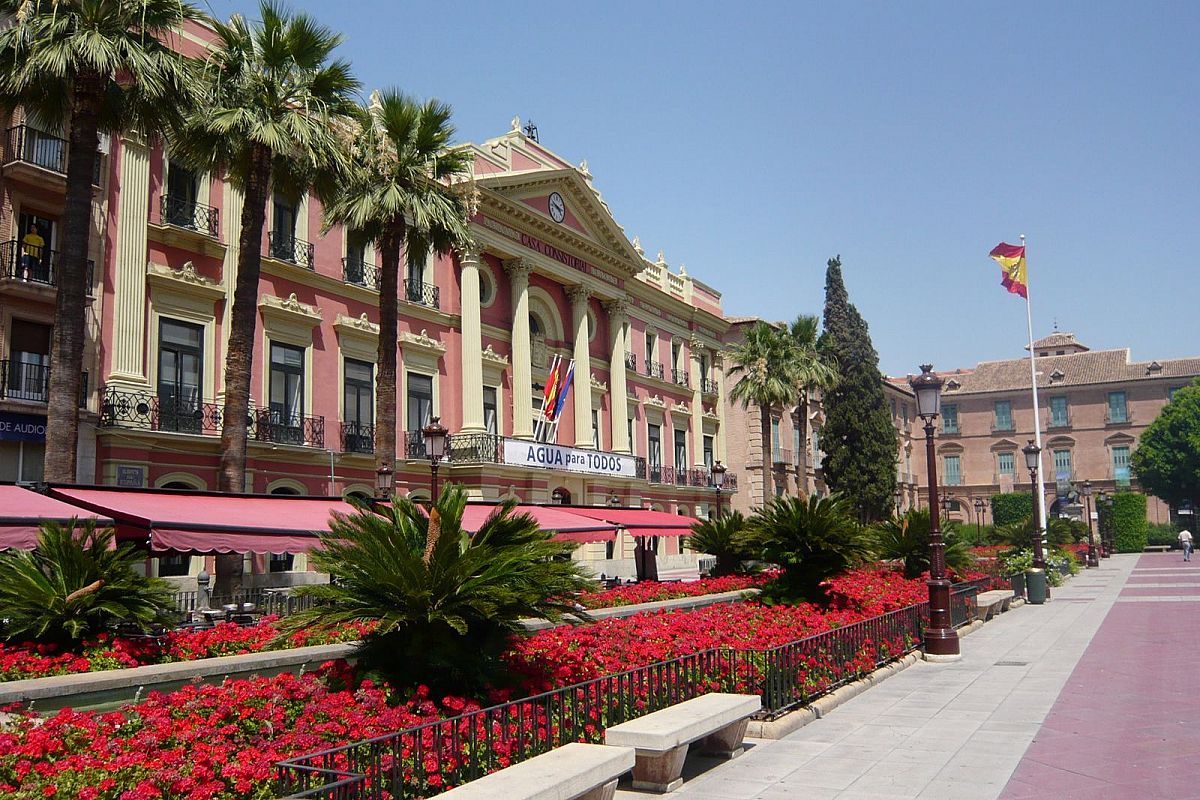Murcia is the capital of the province of Murcia and was founded in 825 by the Moors. The center of this vibrant city is the 18th century square, La Glorieta.
The Casino is located on the pedestrianized main street, Calle de Traperia. This building is a gentlemen's club from 1847, entirely in Arabic style.
The Calle de la Traperia leads to the Cathedral of Murcia which is built on the foundations of a mosque. The city walls give a good idea of the importance of this city under the Arab rulers and the remains are still visible in several places around the city. The wall was originally about 15 meters high and had 95 towers. However, it was not until the 16th century, and in particular the 18th century, that Murcia attained an urban splendor that led to its expansion beyond the city walls. It was during this period that the numerous churches – mainly baroque in style – that dot the entire urban landscape were built. These churches include La Merced, San Miguel, Santa Ana, Las Claras, Santo Domingo, Santa Eulalia and San Juan de Dios, which combines their artistic and architectural designs with important paintings and sculptures and contains numerous important works, including the most remarkable, designed by Francisco Salzillo.
The most important religious building in Murcia is the cathedral, whose construction began at the end of the 14th century; This building contains Gothic elements, such as La Puerta de Los Apóstoles and La Capilla de Los Vélez; Renaissance architecture, for example the Junterón Chapel; and Baroque architecture, including the most curious: its facade, conceived as a gigantic altarpiece by Jaime Bort, with its clever fusion of sculpture and architecture. Also noteworthy is its tower, which is 92 meters high, built in several stages between the 16th and 18th centuries.
The cathedral is flanked by other eighteenth century buildings – the Anglican Palace and the old granary known as El Almudí, both good examples of the building explosion that took place during the aforementioned period. Murcia's streets and squares also offer wonderful examples of 19th century architecture, such as the Town Hall, the Victoria Hotel, the Roman Theater and, most notably, the Casino; This last building was built in 1847 and expanded after 1902 and contains decorations of great importance, such as its dance hall, the neo-nazarí (13th – 15th century Muslim dynasty in Granada) patio or the library, as well as its facade embellished by beautiful sculptures .
All this artistic and historical wealth can be seen in the city's museums, such as the Archaeological Museum, the Bellas Artes Museum or the Salzillo Museum, where visitors can view photos of the Good Friday (Semana Santa) procession. The Hydraulic Museum offers another clear example, as do the bridges over the river and in particular the Old Bridge, of the close relationship between Murcia and the river Segura. Murcian art is not limited to the city limits. Beautiful examples of Baroque architecture can be found at the La Fuensanta Chapel or the Monastery of San Jerónimo. Instead of lingering in its rich past, Murcia has developed into a modern city, with all the necessary facilities and infrastructures, an extensive university complex, an Auditorium and Congress Center.
Properties in Murcia


